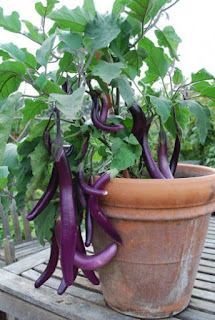Posted by: Lisa Mason, Arapahoe County Extension
Research has shown that mindfulness
and spending time outdoors
offers tremendous health benefits including boosting your immune system,
improving mental health, decreasing stress, increasing creativity and more. Mindfulness
is defined as “maintaining a moment-by-moment awareness of our thoughts,
feelings, bodily sensations, and surrounding environment, through a gentle,
nurturing lens,” according
to UC Berkley. While there are a variety of techniques, one of my favorite
ways to practice mindfulness is to get outside and enjoy nature.
One of the most difficult parts of mindfulness can be
calming down the inner chatter or the “monkey mind.” CSU Extension’s Live
Smart Colorado blog offers some great tips for calming the mind.
Different techniques work for different people. When I am
outside, I like to keep a nature journal and document my surroundings and
experiences. The natural world has so much to see if we pause to observe.
 |
| A nature journal can be a great way to document your experiences. Photo and journal: Lisa Mason |
Not sure where to start? Here is an exercise you can try.
You can write or draw your surroundings and experiences, or you can simply
enjoy the moment.
Take a few deep breaths. Use your senses. What are you
seeing, hearing, tasting, feeling, and smelling? Focus on one sense at a time
for at a minimum a few minutes.
Touch: Notice
the textures and shapes—the bark of different trees, the grass blades, the
ground beneath you.
Sound: Do
you hear birds singing? Maybe different species of birds? What about the wind
blowing through the trees or the squirrels chittering nearby?
Sight: Notice
the clouds in the sky. Where is the position of the sun this time of year? Try
to spot all the living things: the grass, trees, plants, insects, mammals,
birds, etc. Are there any plants beginning to bloom? What colors do you see?
 |
| A purpleleaf sand cherry beginning to bloom in my backyard. Photo: Lisa Mason |
Smell:
Maybe different flowers are blooming, or the smell of rain is in the air. If
you are near a ponderosa pine tree, you might notice the bark smells like
butterscotch or vanilla.
The spring season is a time of change. You might look for
some of the following in your own backyard:
- The summer migrant birds have arrived! Look for hummingbirds, turkey vultures, Swainson’s hawks, and more.
- Native bees are emerging from underground and cavities. You can see them foraging on flowers such as chokecherries.
- Deciduous tree leaves are starting to emerge. While the latest cold and snow may have damaged buds on some trees, others are just getting started.
- It is breeding season for birds. Some birds like the downy woodpeckers are making their nests now. Others like great horned owls already have babies in their nests. In fact, great horned owls are among the first birds to have babies in the season.
- You might catch a glimpse of a butterfly. We will start seeing more and more. Some butterflies species overwinter in a chrysalis and others will migrate to Colorado.
- We have so much daylight right now--almost 14 hours of daylight! That means more time to enjoy the outdoors, especially in the evenings.
Remember: if you are outdoors, please follow social
distancing protocols in your area such as wearing a mask and keeping at least a
6-foot distance between you and other people.
Take care and enjoy nature!
























